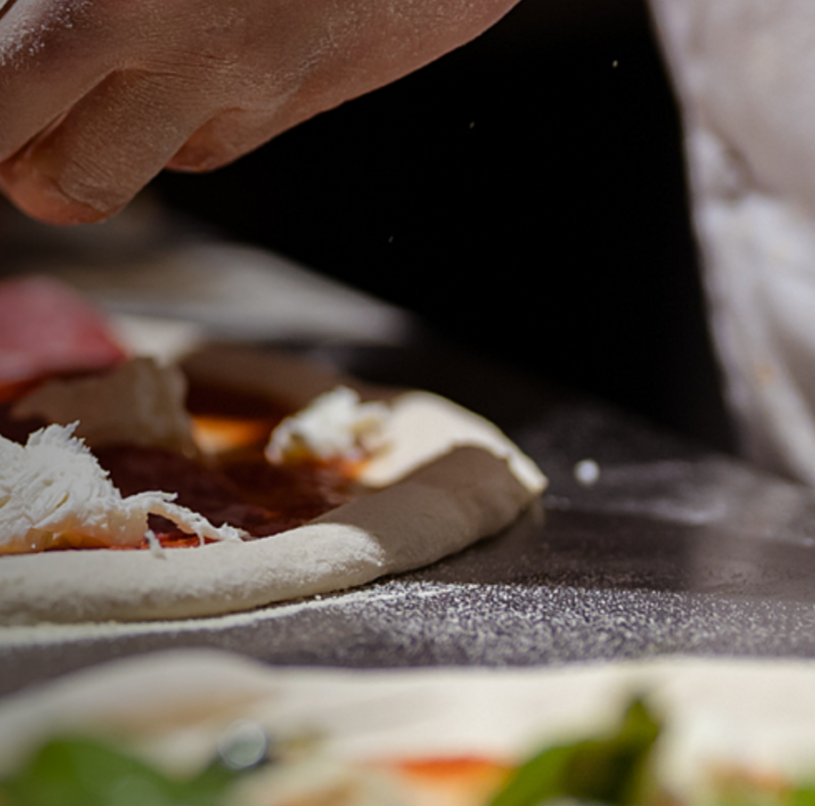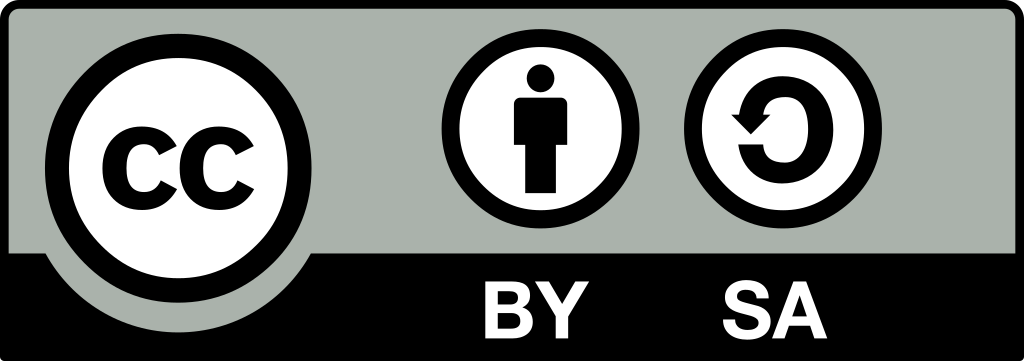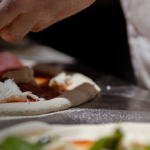You can see the dough being kneaded and thrown in the air, smell the cheese bubbling as it roasts in your brand new brick oven, and hear the chop chop chop of vegetables and meats as they become pizza toppings, just begging guests to toss them onto a slice. You’re opening the pizzeria of your dreams and you can’t wait to welcome customers into your new establishment for a yummy lunch or a late-night bite – but first, you’ll need a menu.
Pizzeria Menu Design Best Practices
These next 10 steps will help guide you through everything you need to know – from your colors, design, composition, and layout, to prices, item descriptions, and visual components, for printed or digital versions, and more. Your menu is not just a list of items, it’s an opportunity to communicate with your customers, influence their behavior, drive business, and maximize revenue. So follow along, feel free to cross-reference other resources, like these menu design best practices, and we’ll get you ready to launch the pizzeria menu design of your dreams!
How to Make a Pizzeria Menu
Write out all menu items
Get your note-taking tool of choice ready, whether digital, like an Excel or Google sheet, or a good, old-fashioned pen and piece of paper – the first step is to list out every single item you’re planning to include on your pizzeria menu.
This step is critical to setting yourself up for success as you continue through the rest of this post. As you get further into your menu design process, tasks like calculating your menu prices, drafting your menu descriptions, determining your layout and spacing, and more, will all depend on what items you include in this initial step. Take your time to think it through and ensure you’re getting everything down – from your pizza pies and slices to your toppings, sides, add-ons, drinks, desserts, and more.
Categorize menu items
Once you have the items that will appear on your menu, it’s time to think about how you want them to appear. Will you organize your pizzas by the pie or by the slice? Will you only offer premade pies, or will guests be allowed to create their own from a list of toppings? If the latter, will this customization be available for full pizzas and slices, or just one or the other? Will you offer different-sized pizzas, or stick with one standard for all? Will you offer combo options, mixing and matching pizzas, drinks, and desserts to engage customers and drive business? If so, how will you distinguish that option from the usual fare on your menu?
Consider what will feel most intuitive to your reader – what organizational approach will make it easiest for guests to scan your menu and make a purchase? Also consider how big each category will be, and how much space they’ll take up as sections on your menu. Will these sections feel balanced on the page, or will you need to reorganize a bit to ensure it’s still aesthetically pleasing?
Create menu descriptions
In order to get customers to buy your product, you’ll most likely have to communicate what’s in the product you’re offering, in order to successfully sell them on it. Enter: your menu item descriptions.
Will you describe your pizza pie selection with a humorous narrative paragraph, or a more straightforward list of ingredients? Will your pizzas have funny names or will you keep it literal and to the point? How will the language you choose align with your brand identity, and engage your target customer market?
It’ll also be important to make sure that your menu item descriptions include everything your customers might need to know before they place their order – for example, how will you communicate which items are gluten-free, dairy-free, vegan, vegetarian, or any other potential allergies or dietary restrictions?
If this step feels overwhelming, or if descriptions like this just aren’t really your jam, it’s also totally okay to bring in a copywriter for some of the more writing-heavy components of the menu design process.
Decide on a menu color scheme
The color scheme is one of the first things your customers will likely notice when picking up your menu, so it’s important to be thoughtful and intentional about the colors you choose, and what they communicate about your pizzeria’s brand and identity.
If you already have a brand kit established, this is a great opportunity to incorporate your colors into a new context. If not, Chron’s The Psychology of Colors for Restaurant Designs, Adobe Color CC (color wheel tool), ColorDot (color palette tool), and ColRD (color inspiration) are all great resources for some color palette inspiration.
If you’re planning on getting your menus printed, you might also want to consider the cost of printing before you get too far past this step of the process. It’s typically more expensive to print in color than in black and white, and printing services may offer varying price points for different colors/the number of colors you choose to incorporate – this is a good opportunity to look into those costs and make sure your budget can accommodate the colors you’re hoping to use before moving forward with them.
Design your pizzeria menu
As you work on your design, it might be helpful to consider how you’re utilizing the space on your menu page, and whether you’re able to fit all of the information you want to convey in a way that’s accessible without being overwhelming. Think about how your menu feels upon first glance – is it busy and chaotic, or more spaced out and pleasant on the eyes? Consider how your menu design enables a good flow for your reader, and whether it’s intuitive to browse.
Pizzeria Menu Photos
High-quality photos or other visual assets, like illustrations or designs, can be valuable additions to your menu design, enhancing the overall aesthetic and helping to drive greater customer engagement. If a professional photoshoot feels out of reach, iPhone cameras also offer plenty of potential for creating great visual components – just make sure any photos or visuals you go with are high-caliber options. Nixing the photo idea altogether is often actually better than including bad photos, which can undermine brand credibility and erode customer trust.
If you have the capacity to establish and maintain a social media presence, sites like Instagram and Tik Tok can also be great tools to engage your customers. Throw a QR code on your menu linking to your socials, and encourage guests to tag your pizzeria in any content they post to generate some online buzz (and free marketing!).
Choose Menu Fonts, Spacing, and Composition
You’ll also want to consider what fonts to use for your text, how your text will be spaced out on the page, and how you want it to show up about, and interact with, the other components of your menu.
Consider what kind of fonts you want to use and why – fun and playful, classy and elegant, simple block text? – how many do you deploy – different fonts for each header, subheader, and items, the same throughout, mix and match? – which to implement in each section of your menu, and why. If you are using multiple fonts, will they be complementary or intentionally juxtaposed?
Also, think about how each section will be spaced out about one another, as well as the items within each section – maybe certain items will be grouped closer together to indicate their category, or maybe everything will be completely evenly spaced throughout for a crisper, cleaner look.
Ask yourself: Does my menu feel crowded? Is it overwhelming for my viewers? Is it too empty, too spaced out, or too plain so as to feel boring and uninteresting?
Feel free to play around with different options when it comes to your fonts, spacing, and overall composition to get a better sense of what might work best for you and your pizzeria.
Select the final menu layout
Once you have your best options, it’s time to choose the final layout. Don’t be afraid to poll trusted sources and crowdsource feedback. Outside perspectives are invaluable, especially at this stage of the process, when you’ve been so closely immersed in your design for so long. Keep an open mind, and reach out to friends, family, pizzeria staff, and key stakeholders so that when you make your final decision, you’re doing so with as much support, information, and confidence as you possibly can.
Proofread and print your menu
And finally… it’s off to the printers! Give your final menu selection a very close read before you print it (and maybe even bring some of those trusted sources back in for an extra set of eyes and a deep copy edit) and you’ll be ready to go – congratulations!
Amazing pizzeria menu examples
For some pizzeria menu inspiration, check out these examples.
Lucali’s menu is simple and effective, providing their customers with everything they need to place their order without overwhelming them with options. With toppings clearly listed, calzones options laid out, and specifications like “BYOB” and “cash only” displayed for their guests to plan accordingly ahead of time, this menu covers all the bases.
One of New York City’s most iconic pizza institutions, Joe’s Pizza does not disappoint when it comes to their menu or their slices. With mouthwatering photos previewing their pies for their guests, clearly organized menu sections, detailed item descriptions, and easy to find prices, Joe’s doesn’t miss.
Maybe my favorite example on this list, the menu at Best Pizza truly lives up to its establishment’s name. With an aesthetically pleasing pink, green, and beige color scheme, funky design components and illustrations — including a map of Williamsburg indicating where the pizzeria can be found — and playful, complementary font options, not to mention clearly organized and well-spaced sections, this menu is an A+ in my book.
While the content of their menu is short and sweet laying out a quick list of pizza options to choose from, Ops adds elegance and intrigue by incorporating visuals into their design — a beautifully shot image of one of their pies, a splash of color on their header font, and their Instagram page embedded into the bottom of their menu, for their guests to peruse ahead of arrival.
With funky fonts, exciting illustrations, detailed menu descriptions, engaging color scheme, easy-to-read menu items and prices, and all around creative offerings, the menu at Upside Pizza hits the nail on the head — and lowkey makes me wish I lived in New York City so I could go grab a slice… right now…
The menu at Scarr’s Pizza offers a great example of how a fun color palette and playful fonts can brighten up an otherwise simple and straightforward layout. Their well-organized menu sections — from appetizers to slices, to both to-go and dine-in pies and the toppings available to add on, to drinks and sides — are brought to life with a fun orange and blue color scheme that manages to engage but not overwhelm their audience. Well done!
Classy, luxurious, refined, appealing — the menu at Zero Otto Love Trattoria captures it all, with a sleek gold, white, and black color scheme, elegant fonts, and engaging illustrations for their Pizza, Piatti, Dessers, Drinks, and Prix-Fixe menu sections — not to mention well organized, menu sections, detailed item descriptions, and clearly labeled prices. Bravo!
Roberta’s provides a perfect example of how offering multiple menus can ensure items are easily accessible without overwhelming guests with options. With separate lunch, dinner, takeaway, wine, drinks, tiki bar, and group dining lunch menus available, guests can navigate to the best one for the occasion, without worrying about sifting through excess information. On top of that, each menu itself manages to strike an ideal balance, mixing minimalist text and spacing with funky photos and illustrations to engage guests and differentiate their brand.
The menu at Cuts and Slices offers a masterclass in menu sectioning. With clearly defined main headers, organized by “Apps & Snacks” and “Slices,” and just as well defined and organized subheads, underneath each main section, guests are able to scan Cuts and Slices’s wide range of options and easily make their meal selection. Bon appétit indeed!
Joe & Pat’s offers so many items, it would be easy to get lost in their giant menu. But with a long list of clearly defined and organized menu sections — including specials, pizza, specialty pies, appetizers, seafood appetizers, salads and soups, heroes, wraps, and burgers, paninis, pasta, seafood, entrees, calzones and rolls, drinks, and more — their menu actually presents a great map for guests on their journey to an easy and successful order!








